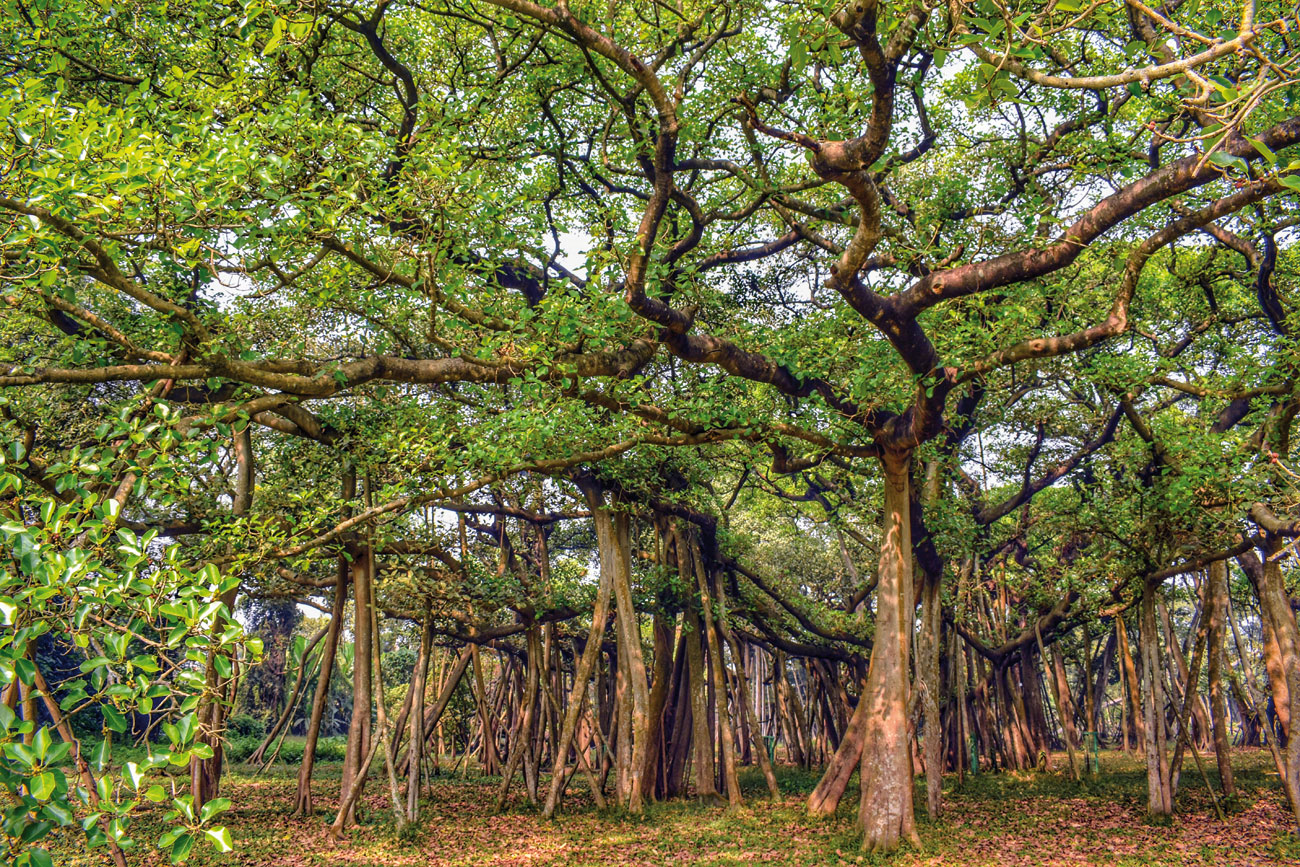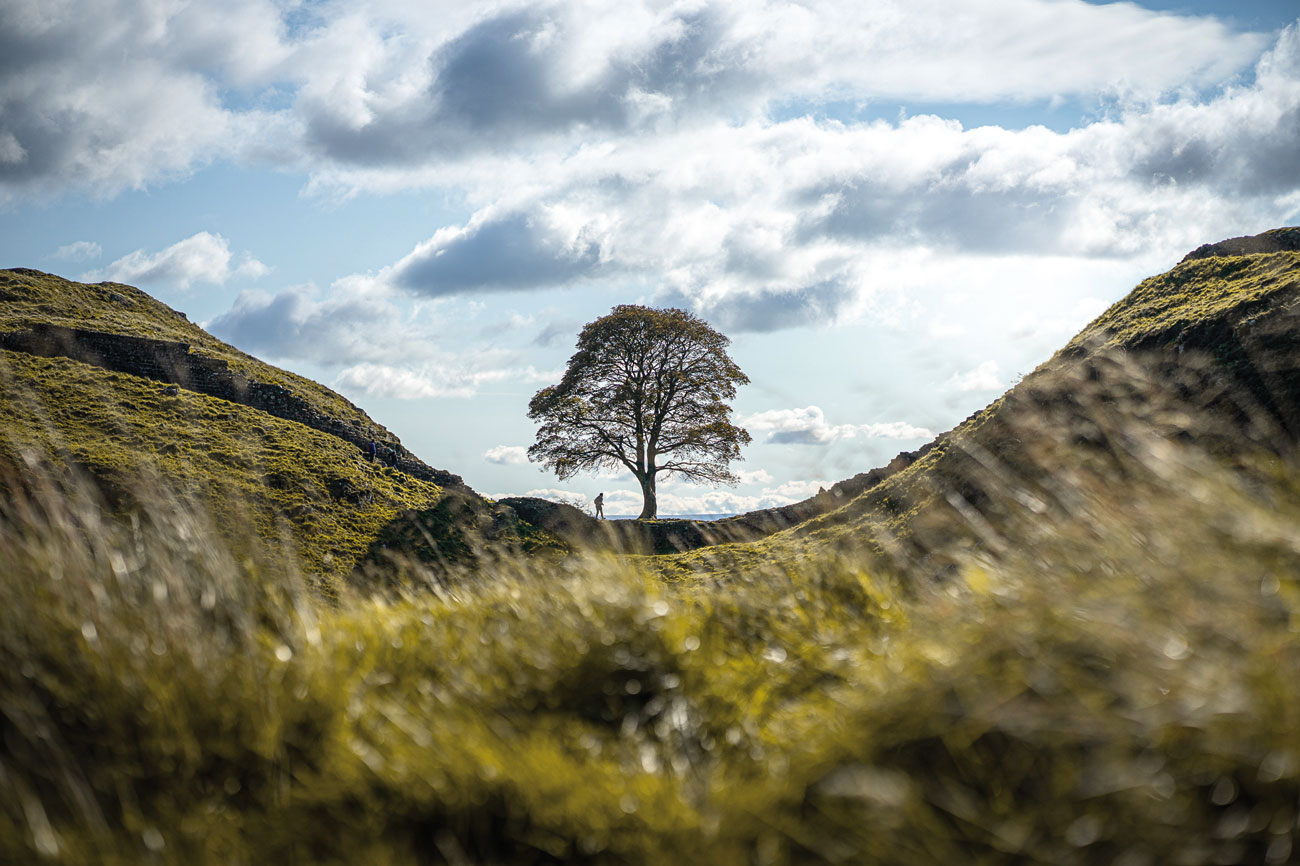Landmark Trees
First published in Sanctuary Asia,
Vol. 43
No. 12,
December 2023
By Soham Kacker
In May 2020, Cyclone Amphan hit the Bay of Bengal, felling a large number of trees at the Acharya Jagdish Chandra Bose Botanical Gardens at Howrah. Among those damaged, was ‘The Great Banyan’, and several media outlets ran stories about the damage to the massive tree, more than 250 years old, and nearly a kilometre in circumference. The public voiced concern over its survival, and stories circulated about its heritage value – as India’s national tree and the emblem for the Botanical Survey of India. Earlier this year, in the U.K., an iconic and beloved tree named the ‘Sycamore Gap Tree’ was felled in an act of vandalism, which caused a public outcry over its death, with people holding remembrances at the site where it grew, in a picturesque dip in the landscape.

The Great Banyan tree, an ancient tree at the Acharya Jagdish Chandra Bose Botanical Gardens in Howrah, was damaged by Cyclone Amphan in May 2020. Photo: Public Domain/Aritro Mukherjee.
The Great Banyan at Howrah and the Sycamore Gap Tree are examples of iconic individual trees that occupy a large place in the public imagination – in other words, they are landmark or heritage trees. India, like many other places in the world, holds a deep reverence for certain individual trees for their age and size, their religious or mythological associations, their symbolic or cultural value, or their aesthetic and popular appeal. Examples of such hallowed trees dot the Indian landscape… the Kamakshi Ekambaram at the temple in Kanchipuram is a sacred mango tree worshipped by devotees, and the Bodhi tree at Gaya is a sacred banyan supposedly grown from a branch of the tree under which the Buddha attained enlightenment. The Jageshwar Cedars in a cool valley in Kumaon are revered for their age and stature, towering over the nearby temples. Landmark trees are not always sacred, or even native to India – the Mallanimli Baobab in Orchha in Madhya Pradesh is said to be nearly 500 years old and was supposedly planted by a local Maharaja, while the Malabar Hill Flag in Mumbai is a South American giant that watches over Chowpatty Beach and Marine Drive.
In some instances, these landmark trees can be compared with charismatic or ‘flagship’ species in conservation – a concept at the centre of ongoing debate. These trees receive a lot of attention, and often disproportionate management and preservation – despite not being particularly important from an ecological point of view. In 2019, hundreds of people gathered in Delhi to protest the removal of the iconic jamun trees on the Central Vista, yet only a few kilometres south, the encroachment and fragmentation of the Aravallis received far less attention. Heritage trees do not represent endangered species, nor do they always represent indigenous ecosystems, but do they have a place in conservation discourse today? Some arguments have been used to justify flagship species – they create significant attention and awareness, which slowly trickles down to other aspects of an ecosystem. They may be the posterchild, but the benefits they generate are shared equitably, for the most part. They also provide a charismatic and relatable catalyst for public opinion – rather than untangling and engaging with complex ecosystems, people find it easier to rally behind an individual representative.

The Sycamore Gap Tree stood near the historical landmark Hadrian’s Wall. Photo: Public Domain/Clement P.
However, heritage trees also play other important roles, beyond the ecological, which cannot be discounted in conservation. They foster people’s connection with organisms beyond the human – in lifestyles, which are rapidly urbanising and moving farther from natural interactions, they provide a connect with Nature. By supporting the formation of these ties, they work to change people’s views of the natural world – from something that is ‘other’, and meant for human exploitation; to something that is sacred, and an object of respect and reverence. They also urge us to look beyond the typical classifications of species and ecologies in conservation, and consider broader relationships between Nature and society.
Further Reading
Nagendra, Harini. ‘Heritage Trees Need Legal Rights’. Deccan Herald. Accessed November 13, 2023.
Modwel, Nerupama Y., et al. ‘Conservation of Indian Heritage Trees.’ Documenting India’s Intangible Cultural Heritage, Indian National Trust for Art and Cultural Heritage, Intangible Cultural Heritage Division, New Delhi, 2013.
Soham Kacker is passionate about plants and has apprenticed at the Auroville Botanical Gardens and the Aravalli Biodiversity Park. Currently based in the UK, he is a Master’s student at the University of Oxford, focusing on plant ecology and conservation.



